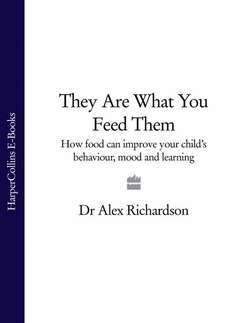Читать книгу They Are What You Feed Them: How Food Can Improve Your Child’s Behaviour, Mood and Learning - Dr Richardson Alex - Страница 46
Keeping It in the Family
ОглавлениеConditions like ADHD, autism and dyslexia tend to run in the same families, but the reasons for this aren’t always down to genetics. The predisposition to these kinds of difficulties is certainly under some degree of genetic influence—and research is starting to tease out some possible ‘candidate genes’ that may play a part. However, let’s get one thing clear: there are no individual genes ‘for’ any of these conditions. Many different genes can contribute to an individual’s risk; these differ between individuals, and some are widely distributed in the general population. What’s more, no genes can operate without an environment. This includes other genes, various influences that operate while a baby is still in the womb and many, many others that continue to switch genes ‘on’ and ‘off’ during every single moment of your child’s life.
These influences include your child’s diet— because nutrition interacts with genetics in two main ways:
1 Some genes can affect the way in which your child absorbs and uses (metabolizes) different nutrients. This is just another way of saying that different people have different nutrient requirements.
2 Nutrients can actually affect the expression of many genes. This means that you might be genetically ‘at risk’ for something like ADHD or depression, but you won’t necessarily develop the symptoms if your environment (including diet) is good.
Genes are not destiny—and it’s worth pointing out that families often share dietary habits as well as genes! How good are yours?
